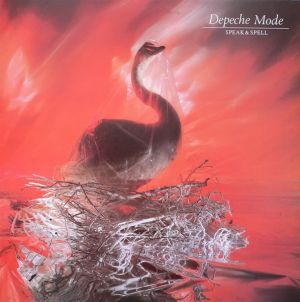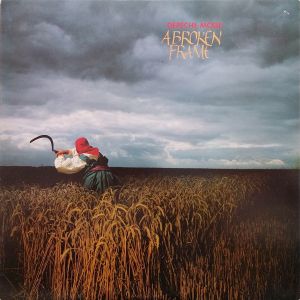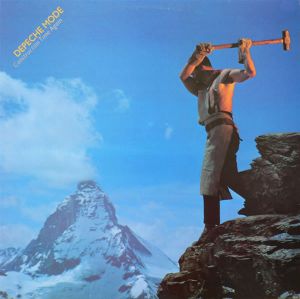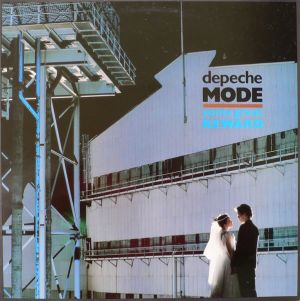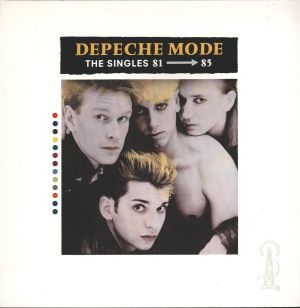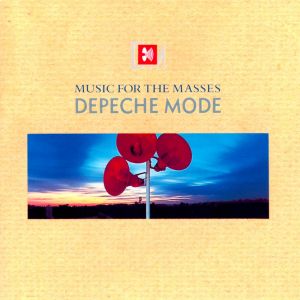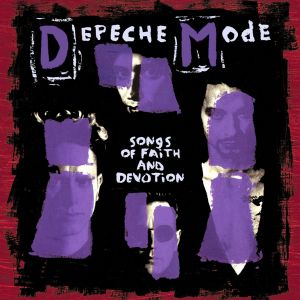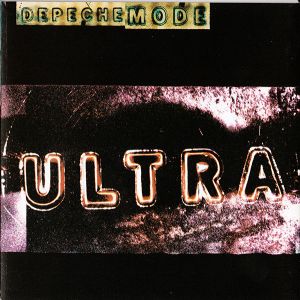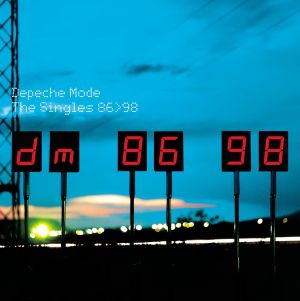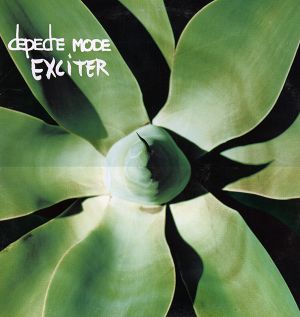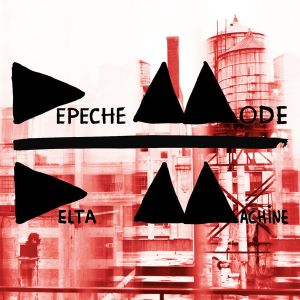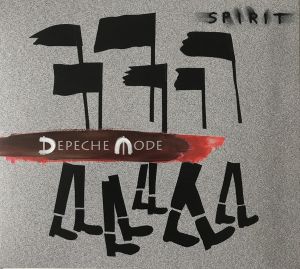|
|
| (15 intermediate revisions by the same user not shown) |
| Line 18: |
Line 18: |
|
| |
|
| = Studio albums = | | = Studio albums = |
| == ''[[Speak & Spell]]'' (1981) == | | {{Sample source album preview |
| ''Speak & Spell'' is not yet known to contain samples from any identifiable sources.
| | |albumpage=[[Speak & Spell]] |
| | | |year=1981 |
| == ''[[A Broken Frame]]'' (1982) == | | |file=Album-SAS.jpg |
| {{main|List of Depeche Mode sample sources by album/A Broken Frame|List of Depeche Mode sample sources by album/A Broken Frame}} | | |link=[[List of Depeche Mode sample sources by album/Speak & Spell]] |
| | | |text={{main|List of Depeche Mode sample sources by album/Speak & Spell|List of Depeche Mode sample sources by album/Speak & Spell}} |
| == ''[[Construction Time Again]]'' (1983) == | | |size=100px |
| {{main|List of Depeche Mode sample sources by album/Construction Time Again|List of Depeche Mode sample sources by album/Construction Time Again}} | | }} |
| | | {{Sample source album preview |
| == ''[[Some Great Reward]]'' (1984) == | | |albumpage=[[A Broken Frame]] |
| {{main|List of Depeche Mode sample sources by album/Some Great Reward|List of Depeche Mode sample sources by album/Some Great Reward}} | | |year=1982 |
| | | |file=Album-ABF.jpg |
| == ''The Singles 81→85'' (1985) ==
| | |link=[[List of Depeche Mode sample sources by album/A Broken Frame]] |
| {{Sample source with audio | | |text={{main|List of Depeche Mode sample sources by album/A Broken Frame|List of Depeche Mode sample sources by album/A Broken Frame}} |
| |song={{S|Shake The Disease}} | | |size=100px |
| |artist=[[Depeche Mode]]
| | }} |
| |releaseyear=1985 | | {{Sample source album preview |
| |smsample1=Celeste-like bell | | |albumpage=[[Construction Time Again]] |
| |smsnotes1=A {{EL|https://en.wikipedia.org/wiki/Celesta celeste}}-like element is layered with a variety of other musical parts (including a separate bell sample and synthesized parts. This distinctive sound would also see use in several other [[Depeche Mode]] songs recorded during this era, including {{s|It Doesn't Matter Two}} and {{s|But Not Tonight}}) to form a melodic part audible during the post-chorus sections of "Shake The Disease". | | |year=1983 |
| |smsample2=Metallic percussive element | | |file=Album-CTA.jpg |
| |smsnotes2=A percussive element with a high frequency is used during the post-chorus sections layered with several other parts and processed with reverb. The sample is re-triggered to play in time with the bell melody, and is played in two ways: one where the sample is re-triggered in time with the bell melody and then allowed to play out (or allowed to play from beginning to end) on the seventh keypress, and one where the sample cuts away on the seventh keypress without playing in full. Notably, this sample is also used in several other songs recorded by Depeche Mode between 1984 and 1985, including {{s|It Doesn't Matter}}.
| | |link=[[List of Depeche Mode sample sources by album/Construction Time Again]] |
| |smsample3=Verse melody synth layer | | |text={{main|List of Depeche Mode sample sources by album/Construction Time Again|List of Depeche Mode sample sources by album/Construction Time Again}} |
| |smsnotes3=A sample featuring audio derived from a synthesizer originally recorded for use during the verse sections of {{S|Everything Counts}} is layered with a separate sample to form the eight note melody performed throughout the first half of each {{EL|https://en.wikipedia.org/wiki/Song_structure#Verse verse}} section. This sample is also used to subtle effect throughout the chorus sections of {{S|Here Is The House}}.
| | |size=100px |
| |smsexample3=ss-STD-EC-Synth.mp3 | | }} |
| |ssample1=Middle eight melody | | {{Sample source album preview |
| |ssource1='''{{EL|http://www.vintagesynth.com/yamaha/dx7.php Yamaha DX7}} factory ROM #1 Bank B: "CALIOPE"''' | | |albumpage=[[Some Great Reward]] |
| |sstatus1=C | | |year=1984 |
| |snotes1=A manipulated {{EL|https://en.wikipedia.org/wiki/Calliope_(music) calliope}}-esque sample derived from the Yamaha DX7 factory Rom #1 program "CALIOPE" is layered with a series of other instruments to form the layered melody performed during the {{EL|https://en.wikipedia.org/wiki/Thirty-two-bar_form#Middle_eight middle eight}} section of "Shake The Disease".
| | |file=Album-SGR.jpg |
| |sexample1=ss-STD-DX7-Rom1B-Caliope.mp3 | | |link=[[List of Depeche Mode sample sources by album/Some Great Reward]] |
| |ssample2=Verse melody | | |text={{main|List of Depeche Mode sample sources by album/Some Great Reward|List of Depeche Mode sample sources by album/Some Great Reward}} |
| |ssource2='''{{EL|http://www.vintagesynth.com/emu/emulator2.php Emulator II}} factory library disk #04: Grand Piano - Preset #1: "Piano #1"''' | | |size=100px |
| |sstatus2=C | | }} |
| |snotes2="Shake The Disease" utilises a series of edited samples derived from {{EL|http://www.vintagesynth.com/emu/emulator2.php Emulator II}} factory library disk #04 "Grand Piano". As is common practice with multi-sampled instruments, the samples are {{EL|https://en.wikipedia.org/wiki/Sampler_(musical_instrument)#Interface keymapped}} onto separate sections of a sampler keyboard in accordance with their pitch to approximate the differences in tone between notes of differing octaves on a traditional piano, and are subsequently layered with a guitar-like sample to form the melody performed in the latter half of each {{EL|https://en.wikipedia.org/wiki/Song_structure#Verse verse}} section. | | {{Sample source album preview |
| |sexample2=ss-STD-EII-04-Grand-Piano.mp3 | | |albumpage=The Singles 81→85 |
| |sexamplenotes2=In this example, Emulator II factory disk #04 "Grand Piano" is compared to a selection of audio from the "Remixed Extended" remix of "Shake The Disease" (played out of phase to more clearly expose the verse melody) to demonstrate the similarity in tone between the Emulator II contents and one layer of the verse melody.
| | |year=1985 |
| |ssample3=Chorus synth melody layer
| | |file=Album-8185.jpg |
| |ssource3='''{{EL|http://www.vintagesynth.com/misc/synclav.php Synclavier II}} Resynth Library Disk #4 - 4464 Harp'''
| | |link=[[List of Depeche Mode sample sources by album/The Singles 81→85]] |
| |sstatus3=C | | |text={{main|List of Depeche Mode sample sources by album/The Singles 81→85|List of Depeche Mode sample sources by album/The Singles 81→85}} |
| |snotes3=A harp-like synth pluck sound derived from the "Harp" timbre of {{EL|http://www.vintagesynth.com/misc/synclav.php Synclavier II}} Resynth library diskette #4 is layered with a separate sampled sound to form the lead melody heard during the {{EL|https://en.wikipedia.org/wiki/Song_structure#Chorus_or_refrain chorus}} sections of "Shake The Disease". | | |size=100px |
| |sexample3=ss-STD-Synclavier-Resynth4-4464-Harp.mp3 | | }} |
| |sexamplenotes3=In this example, a selection of audio derived from "Shake The Disease" is compared to the source sound as produced by the Arturia Synclavier V, a Synclavier VST emulation (Resynth timbre "4464 Harp" courtesy of Synclavier co-inventor Cameron Jones via {{EL|https://www.facebook.com/groups/TimbreShare/ "Timbre Share"}} {{EL|https://en.wikipedia.org/wiki/Facebook Facebook}} group). | | {{Sample source album preview |
| |ssample4=Post-chorus bell melody layer | | |albumpage=[[Black Celebration (album)|Black Celebration]] |
| |ssource4='''{{EL|http://www.vintagesynth.com/misc/synclav.php Synclavier II}} Timbre Directory Diskette #3 - 2337 Chimes #1'''
| | |year=1986 |
| |sstatus4=C | | |file=Album-Black.jpg |
| |snotes4=A bell-like chime sound derived from the "Chimes #1" timbre of Synclavier II timbre directory diskette #3 is used to play a basic two {{EL|https://en.wikipedia.org/wiki/Octave octave}} seven note melody layered with a series of other sounds to form the bell melody heard during the post-chorus sections of "Shake The Disease". | | |link=[[List of Depeche Mode sample sources by album/Black Celebration]] |
| |sexample4=ss-STD-Synclavier-Disk3-2337-Chimes1.mp3 | | |text={{main|List of Depeche Mode sample sources by album/Black Celebration|List of Depeche Mode sample sources by album/Black Celebration}} |
| |sexamplenotes4=In this example, a selection of audio derived from "Shake The Disease" (played out of phase to more clearly expose the sound in question) is compared to the source sound as produced by the Arturia Synclavier V, a Synclavier VST emulation (Resynth timbre "2337 Chimes #1" courtesy of Synclavier co-inventor Cameron Jones via {{EL|https://www.facebook.com/groups/TimbreShare/ "Timbre Share"}} {{EL|https://en.wikipedia.org/wiki/Facebook Facebook}} group). | | |size=100px |
| | | }} |
| |ssample5=Hi-hats (open and closed), snare drum, bass drum
| | {{Sample source album preview |
| |ssource5='''Yamaha RX-11 - Digital Rhythm Programmer''' - 1984 | | |albumpage=[[Music For The Masses]] |
| |sstatus5=C
| | |year=1987 |
| |snotes5=A series of bass drum, snare drum, and hi-hat samples derived from the Yamaha RX-11 programmable drum machine are utilised throughout "Shake The Disease".
| | |file=Album-MFTM.jpg |
| | | |link=[[List of Depeche Mode sample sources by album/Music For The Masses]] |
| |snumberofrows=5 | | |text={{main|List of Depeche Mode sample sources by album/Music For The Masses|List of Depeche Mode sample sources by album/Music For The Masses}} |
| | |size=100px |
| | }} |
| | {{Sample source album preview |
| | |albumpage=[[Violator]] |
| | |year=1990 |
| | |file=Album-Violator.jpg |
| | |link=[[List of Depeche Mode sample sources by album/Violator]] |
| | |text={{main|List of Depeche Mode sample sources by album/Violator|List of Depeche Mode sample sources by album/Violator}} |
| | |size=100px |
| | }} |
| | {{Sample source album preview |
| | |albumpage=[[Songs Of Faith And Devotion|Songs Of Faith and Devotion]] |
| | |year=1993 |
| | |file=Album-SOFAD.jpg |
| | |link=[[List of Depeche Mode sample sources by album/Songs of Faith and Devotion]] |
| | |text={{main|List of Depeche Mode sample sources by album/Songs of Faith and Devotion|List of Depeche Mode sample sources by album/Songs of Faith and Devotion}} |
| | |size=100px |
| }} | | }} |
| {{Sample source | | {{Sample source album preview |
| |song={{S|It's Called A Heart}} | | |albumpage=[[Ultra]] |
| |artist=[[Depeche Mode]]
| | |year=1997 |
| |releaseyear=1985 | | |file=Album-Ultra.jpg |
| |smsample1=Sampled guitar-like loop | | |link=[[List of Depeche Mode sample sources by album/Ultra]] |
| |smsnotes1="It's Called A Heart" makes sporadic use of a looped guitar part during the instrumental breaks following each {{EL|https://en.wikipedia.org/wiki/Song_structure#Chorus_or_refrain chorus}} section. This sample would later famously be used to form the lead melody heard throughout {{S|A Question Of Time}}. | | |text={{main|List of Depeche Mode sample sources by album/Ultra|List of Depeche Mode sample sources by album/Ultra}} |
| |ssample1=Bass elements
| | |size=100px |
| |ssource1='''{{EL|http://www.vintagesynth.com/emu/emulator2.php Emulator II}} factory library disk #06: "Bass, Synth, Drums"''' | |
| |sstatus1=C
| |
| |snotes1="It's Called A Heart" utilises a bass guitar sample derived from Emulator II factory library disk #06 "Bass, Synth, Drums".
| |
| |ssample2=Choir elements
| |
| |ssource2='''{{EL|http://www.vintagesynth.com/emu/emulator2.php Emulator II}} factory library disk #12: "Voices" - SAMPLE 3'''
| |
| |sstatus2=C
| |
| |snotes2=A choir pad audible throughout the intro and verse sections of "It's Called A Heart" features a sample derived from the "Voices 1" preset of Emulator II factory library disk #12 "Voices". Notably, this sample is also used throughout {{S|But Not Tonight}}. | |
| |snumberofrows=2 | |
| }} | | }} |
| | | {{Sample source album preview |
| {{Sample source with audio | | |albumpage=The Singles 86>98 |
| |song={{S|Flexible}}
| | |year=1998 |
| |artist=[[Depeche Mode]] | | |file=Album-8698.jpg |
| |releaseyear=1985 | | |link=[[List of Depeche Mode sample sources by album/The Singles 86-98]] |
| |ssample1=Bass elements | | |text={{main|List of Depeche Mode sample sources by album/The Singles 86-98|List of Depeche Mode sample sources by album/The Singles 86>98}} |
| |ssource1='''{{EL|http://www.vintagesynth.com/emu/emulator2.php Emulator II}} factory library disk #06: "Bass, Synth, Drums"'''
| | |size=100px |
| |sstatus1=C | |
| |snotes1="Flexible" utilises a bass guitar sample derived from Emulator II factory library disk #06 "Bass, Synth, Drums".
| |
| | |
| |ssample2=Choir elements
| |
| |ssource2='''{{EL|http://www.vintagesynth.com/emu/emulator2.php Emulator II}} factory library disk #12: "Voices" - SAMPLE 3'''
| |
| |sstatus2=C | |
| |snotes2=A sample derived from the "Voices 1" preset of Emulator II factory library disk #12 "Voices" is utilised throughout "Flexible".
| |
| | |
| |ssample3=Banjo elements
| |
| |ssource3='''{{EL|http://www.vintagesynth.com/emu/emulator2.php Emulator II}} factory library disk #23: "Accordian & Banjo" - SAMPLE 7'''
| |
| |sstatus3=C | |
| |snotes3=A looping sample of a strummed banjo derived from Emulator II factory library disk #23 "Accordian & Banjo" is audible throughout "Flexible".
| |
| | |
| |ssample4=Cello, violin elements
| |
| |ssource4='''{{EL|http://www.vintagesynth.com/emu/emulator2.php Emulator II}} factory library disk #37: "Cello & Violin" - SAMPLE 11, SAMPLE 12'''
| |
| |sstatus4=C
| |
| |snotes4=Two samples derived from Emulator II factory library disk #37 "Cello & Violin" are utilised sporadically throughout "Flexible".
| |
| |sround=1
| |
| |snumberofrows=4 | |
| }} | | }} |
| | | {{Sample source album preview |
| == ''[[Black Celebration (album)|Black Celebration]]'' (1986) ==
| | |albumpage=[[Exciter]] |
| {{main|List of Depeche Mode sample sources by album/Black Celebration|List of Depeche Mode sample sources by album/Black Celebration}} | | |year=2001 |
| | | |file=Album-Exciter.jpg |
| == ''[[Music For The Masses]]'' (1987) ==
| | |link=[[List of Depeche Mode sample sources by album/Exciter]] |
| {{main|List of Depeche Mode sample sources by album/Music For The Masses|List of Depeche Mode sample sources by album/Music For The Masses}}
| | |text={{main|List of Depeche Mode sample sources by album/Exciter|List of Depeche Mode sample sources by album/Exciter}} |
| | | |size=100px |
| == ''[[Violator]]'' (1990) ==
| |
| {{main|List of Depeche Mode sample sources by album/Violator|List of Depeche Mode sample sources by album/Violator}}
| |
| | |
| == ''[[Songs Of Faith And Devotion]]'' (1993) ==
| |
| {{main|List of Depeche Mode sample sources by album/Songs of Faith and Devotion|List of Depeche Mode sample sources by album/Songs of Faith and Devotion}}
| |
| | |
| == ''[[Ultra]]'' (1997) ==
| |
| {{main|List of Depeche Mode sample sources by album/Ultra|List of Depeche Mode sample sources by album/Ultra}} | |
| | |
| == ''[[The Singles 86–98|The Singles 86>98]]'' (1998) ==
| |
| === {{S|Only When I Lose Myself}} ===
| |
| {{Sample source with audio
| |
| |song={{S|Only When I Lose Myself}}
| |
| |artist=[[Depeche Mode]]
| |
| |releaseyear=1998
| |
| | |
| |ssample1=Synthesizer elements
| |
| |ssource1='''{{EL|https://en.wikipedia.org/wiki/Roland_Corporation Roland Corporation}} - {{EL|https://en.wikipedia.org/wiki/Roland_JV-1080 Roland JV-1080}} - PR-A (Preset A Bank) - 023 Psycho EP''' - 1994
| |
| |sstatus1=C
| |
| |snotes1=A synthesized electric piano sound derived from the {{EL|https://en.wikipedia.org/wiki/Roland_JV-1080 Roland JV-1080}} factory patch "Psycho EP" is utilised throughout "Only When I Lose Myself".
| |
| | |
| |snumberofrows=1
| |
| |sround=1 | |
| }} | | }} |
| | | {{Sample source album preview |
| === {{S|Surrender}} ===
| | |albumpage=[[Playing The Angel]] |
| {{Sample source with audio | | |year=2005 |
| |song={{S|Surrender}}
| | |file=Album-PTA.jpg |
| |artist=[[Depeche Mode]] | | |link=[[List of Depeche Mode sample sources by album/Playing The Angel]] |
| |releaseyear=1998 | | |text={{main|List of Depeche Mode sample sources by album/Playing The Angel|List of Depeche Mode sample sources by album/Playing The Angel}} |
| | | |size=100px |
| |ssample1=Ambient elements
| |
| |ssource1='''{{EL|https://en.wikipedia.org/wiki/DJ_Shadow DJ Shadow}} - <i>{{EL|https://en.wikipedia.org/wiki/Endtroducing..... Endtroducing.....}}</i> - "Stem/Long Stem"''' - 16 September 1996 | |
| |sstatus1=C | |
| |snotes1=A manipulated section of audio derived from "Stem/Long Stem" by {{EL|https://en.wikipedia.org/wiki/DJ_Shadow DJ Shadow}} is performed across two octaves to form an ambient pad utilised throughout the chorus sections of "Surrender". The sound as it is heard on "Stem/Long Stem" is itself a sample originally derived from "Variation III" by {{EL|https://en.wikipedia.org/wiki/Osanna Osanna}} as featured on the 1972 soundtrack album ''Milano Calibro 9'' for the {{EL|https://en.wikipedia.org/wiki/Milano_Calibro_9 1973 film}} of the same name.
| |
| |sexample1=ss-Surrender-DJShadow-LongStem.mp3
| |
| | |
| |ssample2=Ambient elements
| |
| |ssource2='''{{EL|https://en.wikipedia.org/wiki/Warp_9 Warp 9}} - <i>{{EL|https://en.wikipedia.org/wiki/It%27s_A_Beat_Wave It's a Beat Wave}}</i> - "{{EL|https://en.wikipedia.org/wiki/Light_Years_Away_(Warp_9_song) Light Years Away}}"''' - 1983 | |
| |sstatus2=C
| |
| |snotes2=A series of manipulated sections of audio derived from the intro of "{{EL|https://en.wikipedia.org/wiki/Light_Years_Away_(Warp_9_song) Light Years Away}}" by {{EL|https://en.wikipedia.org/wiki/Warp_9 Warp 9}} are utilised sporadically throughout "Surrender". | |
| |sexample2=ss-Surrender-LightYearsAwayWarp9-Rev1.mp3
| |
| | |
| |ssample3=Synthesizer elements
| |
| |ssource3='''{{EL|https://en.wikipedia.org/wiki/Roland_Corporation Roland Corporation}} - {{EL|https://en.wikipedia.org/wiki/Roland_JV-1080 Roland JV-1080}} - PR-C (Preset C Bank) - 060 ORBit Pad''' - 1994
| |
| |sstatus3=C
| |
| |snotes3=A synthesized warm pad sound derived from an edit to the {{EL|https://en.wikipedia.org/wiki/Roland_JV-1080 Roland JV-1080}} factory patch "ORBit Pad" is utilised during the intro and chorus sections of "Surrender".
| |
| |sexample3=ss-Surrender-JV-1080_PR-C_060_ORBit-Pad.mp3
| |
| | |
| |ssample4=Synthesizer elements
| |
| |ssource4='''{{EL|https://en.wikipedia.org/wiki/Roland_Corporation Roland Corporation}} - {{EL|https://en.wikipedia.org/wiki/Roland_JV-1080 Roland JV-1080}} - PR-C (Preset C Bank) - 060 ORBit Pad''' - 1994
| |
| |sstatus4=C
| |
| |snotes4=A synthesized organ-like sound derived from an edit to the {{EL|https://en.wikipedia.org/wiki/Roland_JV-1080 Roland JV-1080}} factory patch "ORBit Pad" is utilised during the latter half of each verse section throughout "Surrender".
| |
| | |
| |ssample5=Drum elements, bass drum
| |
| |ssource5='''{{EL|https://en.wikipedia.org/wiki/Roland_Corporation Roland Corporation}} - {{EL|https://en.wikipedia.org/wiki/Roland_TR-808 Roland TR-808 Rhythm Composer}}''' - 1980
| |
| |sstatus5=C
| |
| |snotes5=An 808 bass drum audible throughout "Surrender" is derived from the {{EL|https://en.wikipedia.org/wiki/Roland_TR-808 Roland TR-808}} drum machine.
| |
| | |
| |snumberofrows=5
| |
| |sround=1 | |
| }} | | }} |
| | | {{Sample source album preview |
| === {{S|Headstar}} ===
| | |albumpage=[[Sounds Of The Universe]] |
| "Headstar" is not yet known to contain samples from any identifiable sources.
| | |year=2009 |
| | | |file=Album-SOTU.jpg |
| === "Only When I Lose Myself (Dan The Automator Mix)" ===
| | |link=[[Sounds Of The Universe]] |
| {{Sample source with audio | | |text=''Sounds Of The Universe'' is not yet known to contain samples from any identifiable sources. |
| |song="Only When I Lose Myself (Dan The Automator Mix)" | | |size=100px |
| |artist=[[Depeche Mode]]
| |
| |releaseyear=1998 | |
| | |
| |ssample1=Orchestral elements
| |
| |ssource1='''{{EL|https://en.wikipedia.org/wiki/Giuseppe_Verdi Giuseppe Verdi}}, {{EL|https://it.wikipedia.org/wiki/Orchestra_del_Teatro_alla_Scala Orchestra Del Teatro Alla Scala Milano}}, Maria Chiara, Lorin Maazel - <i>Aida</i> - Aida / Act 1: Ritorna vincitor!''' - 1989<ref group="footnotes">Recorded December 1985 through January 1986 at Studio Abanella, Milan, Italy.</ref> | |
| |sstatus1=C | |
| |snotes1=A manipulated section of audio derived from a performance of a scene from {{EL|https://en.wikipedia.org/wiki/Giuseppe_Verdi Giuseppe Verdi's}} 1871 opera ''{{EL|https://en.wikipedia.org/wiki/Aida Aida}}'' by {{EL|https://it.wikipedia.org/wiki/Orchestra_del_Teatro_alla_Scala L'Orchestra del Teatro alla Scala}} with lyric soprano {{EL|https://en.wikipedia.org/wiki/Maria_Chiara Maria Chiara}} and {{EL|https://en.wikipedia.org/wiki/Lorin_Maazel Lorin Maazel}} is utilised sporadically throughout "Only When I Lose Myself (Dan The Automator Mix)". | |
| | |
| |ssample2=Synthesizer elements
| |
| |ssource2='''{{EL|https://en.wikipedia.org/wiki/Roland_Corporation Roland Corporation}} - {{EL|https://en.wikipedia.org/wiki/Roland_JV-1080 Roland JV-1080}} - PR-A (Preset A Bank) - 023 Psycho EP''' - 1994
| |
| |sstatus2=C
| |
| |snotes2=A synthesized electric piano sound derived from the {{EL|https://en.wikipedia.org/wiki/Roland_JV-1080 Roland JV-1080}} factory patch "Psycho EP" is utilised throughout "Only When I Lose Myself (Dan The Automator Mix)".
| |
| | |
| |snumberofrows=2
| |
| |sround=1 | |
| }} | | }} |
| | | {{Sample source album preview |
| == ''[[Exciter]]'' (2001) ==
| | |albumpage=[[Delta Machine]] |
| {{main|List of Depeche Mode sample sources by album/Exciter|List of Depeche Mode sample sources by album/Exciter}} | | |year=2013 |
| | | |file=Album-Delta.jpg |
| == ''[[Playing The Angel]]'' (2005) ==
| | |link=[[Delta Machine]] |
| {{Sample source with audio
| | |text=''Delta Machine'' is not yet known to contain samples from any identifiable sources. |
| |song={{S|Suffer Well}} | | |size=100px |
| |artist=[[Depeche Mode]] | |
| |releaseyear=2005 | |
| |ssample1=Synthesizer elements
| |
| |ssource1='''Native Instruments Reaktor > Kaleidon > "Lagerhallenromanti"''' - 2003 (?)
| |
| |sstatus1=C
| |
| |snotes1=A sweep synthesizer pad derived from "Lagerhallenromanti", a preset featured in the Native Instruments Reaktor ensemble Kaleidon, is utilised throughout "Suffer Well".
| |
| |sround=1 | |
| |snumberofrows=1
| |
| |colorscheme=PTA
| |
| }} | | }} |
| | | {{Sample source album preview |
| {{Sample source with audio | | |albumpage=[[Spirit]] |
| |song={{S|Precious}}
| | |year=2017 |
| |artist=[[Depeche Mode]] | | |file=Album-Spirit.jpg |
| |releaseyear=2005 | | |link=[[Spirit]] |
| |ssample1=Drum elements
| | |text=''Spirit'' is not yet known to contain samples from any identifiable sources. |
| |ssource1='''{{EL|https://www.kvraudio.com/developer/sonic-charge Sonic Charge}} {{EL|https://en.wikipedia.org/wiki/MicroTonic Microtonic}} > Microtonic Drum Patches > By Category > Percussion Patches > "SC Tamb Etnoch"''' - 2003 | | |size=100px |
| |sstatus1=C | |
| |snotes1=A synthesized drum element derived from an edit of "SC Tamb Etnoch", a preset drum patch featured in the 2003 VST plug-in {{EL|https://en.wikipedia.org/wiki/MicroTonic Microtonic}} by {{EL|https://www.kvraudio.com/developer/sonic-charge Sonic Charge}}, is utilised throughout "Precious". | |
| |sround=1
| |
| |snumberofrows=1
| |
| |colorscheme=PTA | |
| }} | | }} |
| {{Sample source with audio | | {{Sample source album preview |
| |song={{S|The Darkest Star}} | | |albumpage=[[Memento Mori]] |
| |artist=[[Depeche Mode]]
| | |year=2023 |
| |releaseyear=2005 | | |file=Album-MM.jpg |
| |ssample1=Ambient elements | | |link=[[Memento Mori]] |
| |ssource1='''{{EL|https://en.wikipedia.org/wiki/Anita_Lane Anita Lane}} - <i>Dirty Pearl</i> - "Picture Of Mary"''' - 1993 | | |text=''Memento Mori'' is not yet known to contain samples from any identifiable sources. |
| |sstatus1=C
| | |size=100px |
| |snotes1=A manipulated section of audio derived from "Picture Of Mary" by the late {{EL|https://en.wikipedia.org/wiki/Anita_Lane Anita Lane}} is utilised sporadically throughout "The Darkest Star".
| |
| |sround=1
| |
| |snumberofrows=1
| |
| |colorscheme=PTA | |
| }} | | }} |
|
| |
| == ''[[Sounds Of The Universe]]'' (2009) ==
| |
| ''Sounds Of The Universe'' is not yet known to contain samples from any identifiable sources.
| |
|
| |
| == ''[[Delta Machine]]'' (2013) ==
| |
| ''Delta Machine'' is not yet known to contain samples from any identifiable sources.
| |
|
| |
| == ''[[Spirit]]'' (2017) ==
| |
| ''Spirit'' is not yet known to contain samples from any identifiable sources.
| |
|
| |
| == ''[[Memento Mori]]'' (2023) ==
| |
| ''Memento Mori'' is not yet known to contain samples from any identifiable sources.
| |
|
| |
| = Other works = | | = Other works = |
| == ''{{EL|https://en.wikipedia.org/wiki/Until_the_End_of_the_World_(soundtrack) Until The End Of The World (Music From The Motion Picture Soundtrack)}}'' == | | == ''{{EL|https://en.wikipedia.org/wiki/Until_the_End_of_the_World_(soundtrack) Until The End Of The World (Music From The Motion Picture Soundtrack)}}'' == |
| Line 277: |
Line 168: |
| |snumberofrows=1 | | |snumberofrows=1 |
| |}} | | |}} |
|
| |
| = References = | | = References = |
| <references /> | | <references /> |
